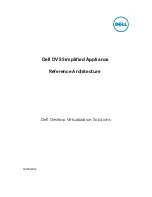
HP Array Configuration Utility 87
•
RAID (on page
88
)
•
Renumber (on page
88
)
•
Repeat (on page
89
)
•
ResourceVolumeOwner (on page
89
)
•
Sectors (on page
89
)
•
ShrinkSize (on page
89
)
•
Size (on page
89
)
•
SizeBlocks (on page
90
)
•
StripeSize (on page
90
)
•
StripSize (on page
90
)
ArrayAccelerator
This option specifies whether the array accelerator is enabled or disabled for the specified logical drive. The
default value is Enabled.
LogicalDrive
The value that you enter for this option specifies the ID number of the logical drive that is to be created or
modified. The first logical drive on an array must have an ID of 1 (not 0), and logical drive numbering must
be contiguous.
•
In Configure action mode, ACU accepts only the ID number of the next possible logical drive.
•
In Reconfigure action mode, ACU also accepts the ID number of any existing logical drive.
CachingLogicalDrive
The value that you enter for this option specifies the ID number of the caching logical drive that is to be
created or modified. The first logical drive on an array must have an ID of 1 (not 0), and logical drive
numbering must be contiguous.
•
In Configure mode, ACU accepts only the ID number of the next possible logical drive.
•
In Reconfigure mode, ACU also accepts the ID number of any existing logical drive.
Caching logical drives and cached data drives must be on the same Array Controller.
CachedLogicalDrive
The value that you enter for this option specifies the data logical drive ID number to associate with the
Caching logical drive.
In Configure mode, ACU accepts the ID number of any existing logical drive.
Caching logical drives and cached data drives must be on the same Array Controller.
NumberOfParityGroups
When you create a RAID 50 or RAID 60 configuration, you must also set the number of parity groups.
You can use any integer value greater than 1 for this setting, with the restriction that the total number of
physical drives in the array must be exactly divisible by the number of parity groups.
















































